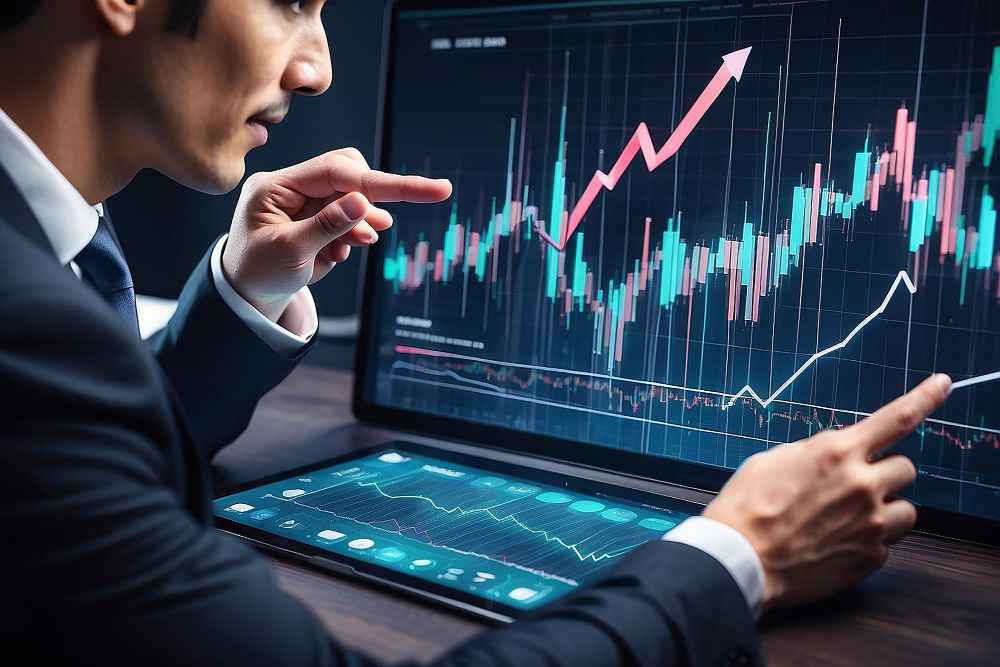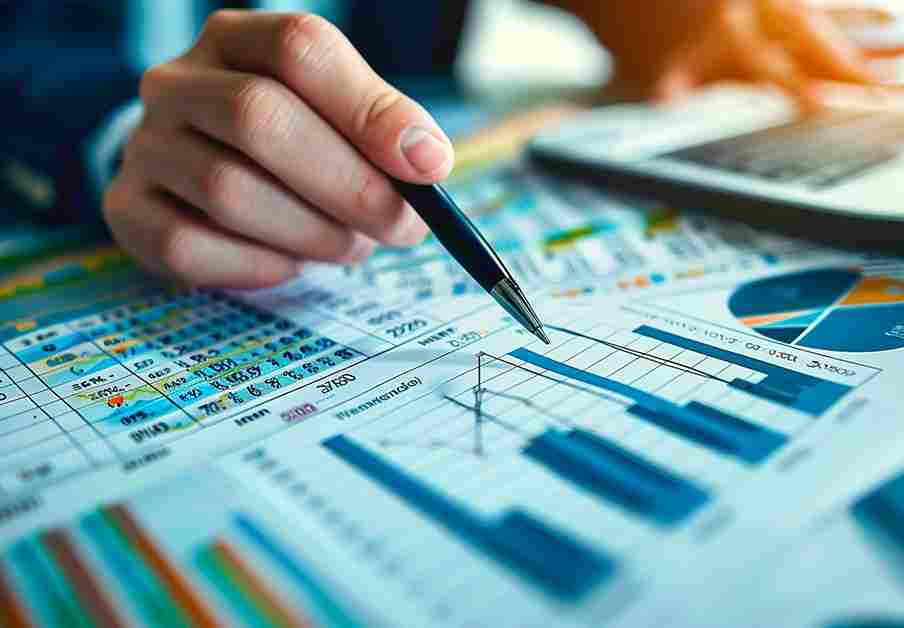Have you ever wondered why forex trading prices suddenly surge? Whether you’re a seasoned trader or a newbie, understanding these price movements is crucial. In this blog post, we will delve into the factors driving forex price surges and offer practical advice on how to navigate these volatile periods effectively. Buckle up, because we’re about to embark on a journey through the dynamic world of forex trading!

Forex Trading Prices Surged: Understanding the Causes and Navigating the Market
1. What Causes Forex Prices to Surge?
Forex prices can surge for various reasons. Economic data releases, geopolitical events, central bank policies, and market sentiment all play significant roles. When important economic indicators, such as GDP growth rates or employment figures, are released, they can drastically alter market expectations and lead to sharp price movements.
2. Economic Data Releases
Economic data releases are like the lifeblood of forex trading. Traders closely monitor these releases to gauge the health of an economy. Positive data, like high GDP growth or low unemployment rates, can boost investor confidence, leading to a surge in the currency’s value. Conversely, negative data can trigger a sell-off, causing prices to plummet.
3. Geopolitical Events
Geopolitical events, such as elections, wars, or trade disputes, can create uncertainty in the forex market. When uncertainty looms, investors often flock to safe-haven currencies like the US dollar or the Swiss franc, causing their prices to surge. Understanding the geopolitical landscape can help traders anticipate and react to these price movements.
4. Central Bank Policies
Central banks wield significant influence over forex prices. Their decisions on interest rates, monetary policy, and quantitative easing can have profound effects on currency values. For instance, a central bank’s decision to raise interest rates can attract foreign investment, driving up the currency’s value. Conversely, a rate cut can lead to a depreciation of the currency.
5. Market Sentiment

Market sentiment, or the overall mood of traders and investors, can also drive price surges. If traders collectively believe that a currency is undervalued or overvalued, their buying or selling actions can create significant price movements. Sentiment analysis, which involves gauging the mood of the market, is a valuable tool for traders.
6. The Impact of Natural Disasters
Natural disasters can also have a profound impact on forex trading prices. Events like earthquakes, hurricanes, and tsunamis can disrupt economic activities, leading to uncertainty in the affected region. This uncertainty can cause investors to move their assets to more stable currencies, resulting in price surges.
7. The Role of Speculation
Speculation in the forex market can lead to significant price surges. Traders often act on rumors or expectations about future events, leading to increased demand for certain currencies. While speculation can drive prices up, it can also lead to increased volatility, making the market more unpredictable.
8. How to Navigate Forex Price Surges

Navigating forex price surges requires a combination of knowledge, strategy, and discipline. Here are some practical tips to help you stay on top of these volatile periods:
9. Stay Informed
Knowledge is power in forex trading. Stay updated on economic data releases, geopolitical events, and central bank announcements. Use economic calendars and news sources to keep track of important events that could impact the market.
10. Use Technical Analysis
Technical analysis involves studying price charts and using indicators to predict future price movements. By identifying patterns and trends, you can anticipate price surges and position yourself accordingly. Common technical indicators include moving averages, RSI (Relative Strength Index), and MACD (Moving Average Convergence Divergence).
11. Implement Risk Management
Risk management is crucial in forex trading. Use stop-loss orders to limit potential losses and take-profit orders to secure profits. Never risk more than a small percentage of your trading capital on a single trade. This way, even if a price surge goes against you, your losses will be manageable.
12. Diversify Your Portfolio

Diversification can help mitigate risk during volatile periods. Instead of putting all your eggs in one basket, spread your investments across different currency pairs. This way, if one currency pair experiences a surge or drop, your overall portfolio remains balanced.
13. Stay Calm and Avoid Emotional Trading
Emotions can cloud your judgment and lead to impulsive decisions. Stick to your trading plan and avoid making trades based on fear or greed. Remember, forex trading is a marathon, not a sprint. Staying calm and composed is key to long-term success.
14. The Role of Automated Trading Systems
Automated trading systems, or forex robots, can help you navigate price surges by executing trades based on predefined criteria. These systems can analyze market data and execute trades faster than a human can, potentially maximizing profits and minimizing losses.
15. Learn from Historical Data
Studying historical data can provide insights into how similar events have impacted forex prices in the past. By understanding these patterns, you can make more informed decisions during future price surges. Historical analysis can also help you identify long-term trends and potential reversal points.
16. The Importance of a Trading Plan

Having a solid trading plan is essential for navigating forex price surges. Your plan should outline your trading goals, risk tolerance, and strategies for entering and exiting trades. By sticking to your plan, you can avoid making impulsive decisions based on short-term market fluctuations.
17. Stay Connected with the Trading Community
Engaging with the trading community can provide valuable insights and support during volatile periods. Online forums, social media groups, and trading webinars can help you stay updated on market trends and share experiences with other traders. Networking with experienced traders can also offer new perspectives and strategies for handling price surges.
18. The Role of Economic Indicators
Understanding key economic indicators can help you predict and navigate forex price surges. Indicators like inflation rates, interest rates, and consumer confidence indices provide insights into the overall health of an economy. By monitoring these indicators, you can anticipate potential price movements and adjust your trading strategy accordingly.
19. Adapting to Changing Market Conditions
The forex market is constantly evolving, and adapting to changing conditions is crucial for long-term success. Stay flexible and be willing to adjust your trading strategies based on new information and market trends. Continuously educating yourself about market dynamics will help you stay ahead of the curve.
20. Utilizing Fundamental Analysis

Fundamental analysis involves evaluating the economic, social, and political factors that influence currency values. By understanding the underlying factors driving price movements, you can make more informed trading decisions. Combining fundamental analysis with technical analysis can provide a comprehensive approach to navigating forex price surges.
21. Practice Patience and Discipline
Patience and discipline are essential qualities for successful forex trading. Avoid the temptation to chase quick profits or make impulsive trades during price surges. Stick to your trading plan, manage your risk, and focus on long-term goals. Remember, consistent and disciplined trading is more likely to yield positive results over time.
Conclusion
Forex trading prices can surge due to a variety of factors, including economic data releases, geopolitical events, central bank policies, market sentiment, natural disasters, and speculation. By staying informed, using technical and fundamental analysis, implementing risk management, diversifying your portfolio, and avoiding emotional trading, you can effectively navigate these volatile periods. Remember, the key to successful forex trading lies in knowledge, strategy, and discipline.
FAQs
-
What is a forex price surge? A forex price surge is a sudden and significant increase in the value of a currency pair, often driven by economic data releases, geopolitical events, or changes in market sentiment.
-
How can I predict a forex price surge? Predicting a forex price surge involves staying informed about economic data releases, geopolitical events, and central bank policies. Technical analysis and sentiment analysis can also provide valuable insights.
-
What are the risks of trading during a price surge? Trading during a price surge can be highly volatile, leading to significant gains or losses. Implementing risk management strategies, such as stop-loss orders, can help mitigate these risks.
-
Can automated trading systems help during price surges? Yes, automated trading systems can execute trades based on predefined criteria, potentially maximizing profits and minimizing losses during price surges.
-
Is forex trading suitable for beginners during volatile periods? Forex trading can be challenging for beginners, especially during volatile periods. It’s essential to educate yourself, start with a demo account, and practice risk management before trading with real money.
